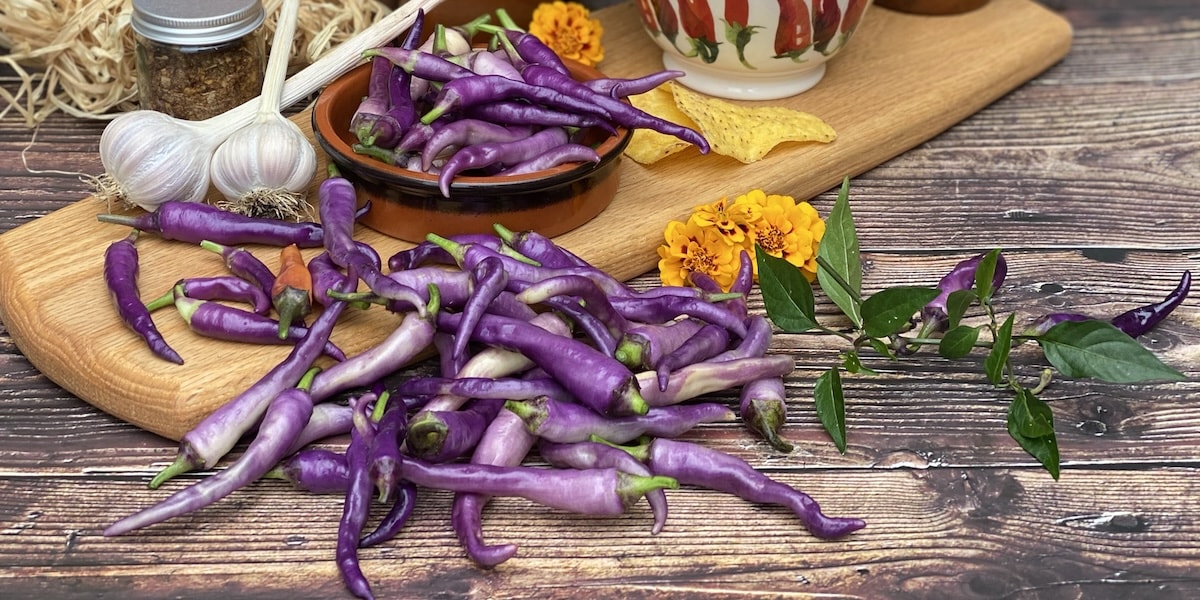Chillies are more than just a spice; they’re a way of life for keen gardeners and home cooks alike. We asked expert grower Rob Smith to share four of his favourite methods for preserving fresh chillies: drying, freezing, pickling, and making hot sauces.
Whether you sow your own chilli seeds or buy potted chilli plants to grow on the kitchen windowsill, here’s how to preserve your chillies and enjoy their fiery flavours all year round.
Cooking with chillies
Chillies can be used in countless ways, from adding a kick to your stir-fries to spicing up soups and stews. Here are some tips for cooking with chillies:
- Start small: Add a small amount of chilli at first and adjust to taste.
- Balance flavours: Combine chillies with sweet, sour, and savoury ingredients to create a balanced dish.
- Pair with dairy: Dairy products like yoghurt, milk, and cheese can help mellow the heat if a dish becomes too spicy.
Interesting Fact: Capsaicin, the compound responsible for the heat in chillies, can help boost metabolism and promote weight loss.
How to dry fresh chillies
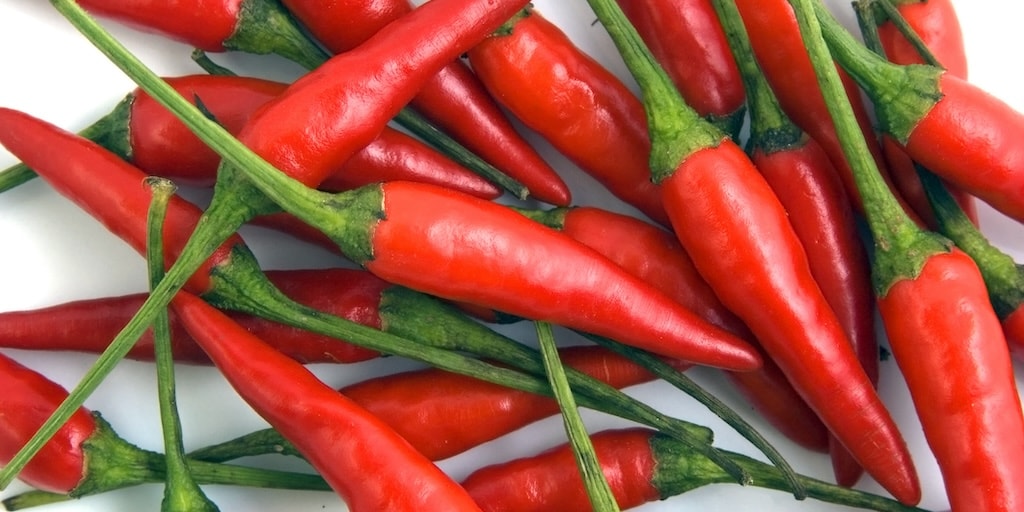
Image: Pepper Chilli Seeds ‘Romital F1’ from Dobies
Drying chillies is a simple and effective way to preserve them, concentrating their natural heat and enhancing their flavour for use in a variety of dishes. It also extends their shelf life without the need for refrigeration.
Around the world, different cultures have perfected their own unique drying techniques. In Mexico, chillies are often sun-dried, hung on ristras to catch the warm rays, while in India, they are laid out on rooftops or woven mats to dry under the scorching sun. In contrast, some Mediterranean countries use traditional drying racks to air-dry their chillies, protecting them from direct sunlight to retain their vibrant colours. Drying chillies at home allows you to harness these time-honoured techniques, ensuring a constant supply of this fiery spice for your culinary creations.
Step-by-step method for drying chillies
- Choose fresh, ripe chillies without blemishes.
- Wash and dry the chillies thoroughly.
- For thinner chillies like cayennes, you can leave them whole, but for thicker-fleshed varieties such as jalapeños, it’s best to cut them in half or into rings. This not only speeds up the drying process but also ensures an even drying throughout the chilli.
- Choose your preferred drying method:
Air Drying: String the chillies together using a needle and thread, then hang them in a warm, dry place. This can take several weeks.
Oven Drying: Place chillies on a baking tray and dry in the oven at the lowest setting (around 60°C / 140°F) for 6-8 hours, turning occasionally.
Dehydrator: Set your dehydrator to a temperature of about 52°C (125°F). Arrange the chillies in a single layer on the dehydrator trays, ensuring they don’t overlap. Depending on the size and moisture content of the chillies, the drying process can take anywhere from 8 to 12 hours. It’s essential to check periodically, rotating the trays if necessary. Using a dehydrator retains the chillies’ vibrant colour and potent flavour. - Once completely dried, store the chillies in airtight containers in a cool, dark place.
Interesting Fact: The world’s hottest chilli, the ‘Carolina Reaper’, measures over 2 million Scoville Heat Units (SHU)!
How to freeze fresh chillies
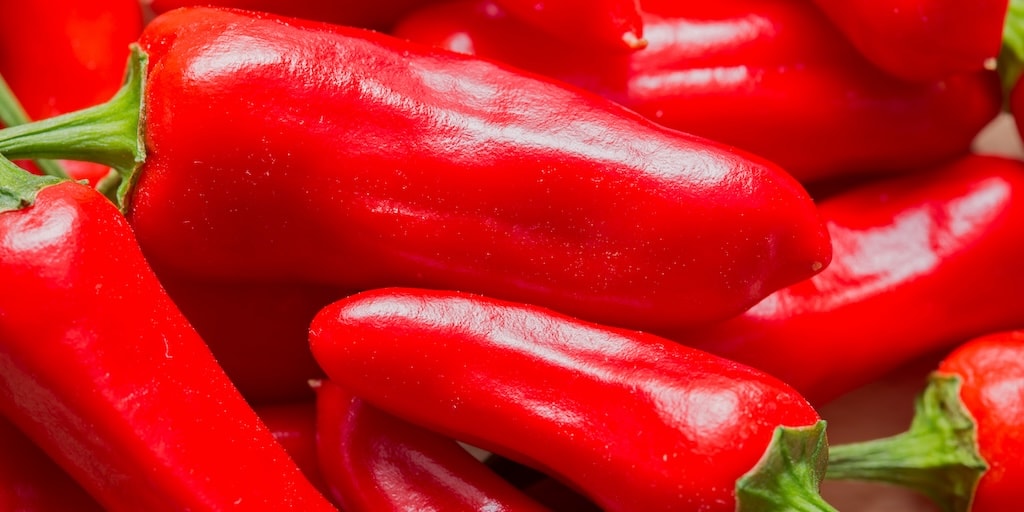
Image: Pepper Chilli Seeds ‘Apache F1’ from Dobies
Freezing chillies is a straightforward and effective method that preserves their vibrant colour, fresh flavour and heat. This technique is particularly beneficial because it locks in the chillies’ nutritional content.
Frozen chillies are perfect for adding to soups, stews, and stir-fries, and they can even be used in fresh salsas once defrosted. This method not only reduces waste but also saves time in meal preparation, providing a convenient and cost-effective way to enjoy the fiery kick of chillies year-round.
Step-by-step method for freezing chillies
- Wash and dry the chillies. Your chillies can be frozen whole, sliced, or chopped, making them easy to use directly from the freezer as needed.
- Spread the chillies on a baking sheet and freeze for 1-2 hours. Flash-freezing them individually on a baking sheet prevents clumping, allowing you to retrieve the exact amount you need without thawing the entire batch.
- Transfer the frozen chillies to freezer-safe bags or containers where they will keep for up to 6 months.
Cooking Tip: Frozen chillies are easier to chop when they are still slightly frozen. Use a sharp knife to avoid accidents.
How to pickle chillies
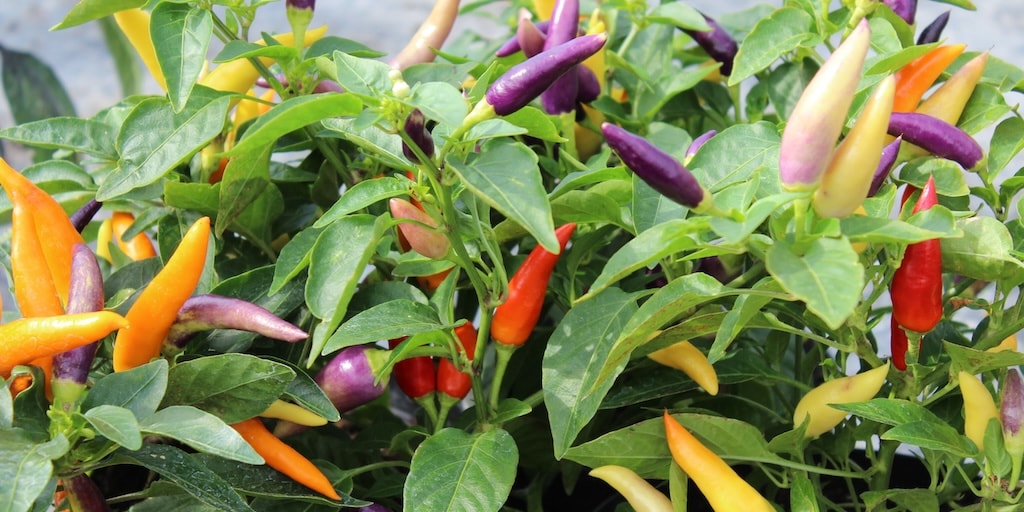
Image: Chilli Pepper ‘Jazz’ F1 Seeds from Dobies
Pickling chillies is a fantastic way to add a tangy twist to their heat, making them a versatile and zesty addition to meals. The pickling process not only extends the shelf life of chillies but also infuses them with complex flavours. By pickling chillies at home, you can experiment with various spices and flavourings, tailoring the heat and taste to your own preferences.
Around the world, different cultures have embraced unique pickling techniques. In Mexico, pickled jalapeños, known as escabeche, are flavoured with carrots, onions, and herbs. In India, chillies are often pickled with mustard seeds, turmeric, and fenugreek, creating a spicy and aromatic relish. South-east Asian countries like Thailand and Vietnam pickle chillies in a simple vinegar brine to accompany noodles and soups.
Step-by-step method for pickling chillies
Ingredients:
- 500g (1 lb) fresh chillies
- 500ml (2 cups) white vinegar
- 250ml (1 cup) water
- 50g (¼ cup) sugar
- 30g (2 tbsp) salt
- 2 garlic cloves, smashed
- 1 tsp whole peppercorns
Method:
- Wash and slice the chillies into rings.
- In a saucepan, combine the vinegar, water, sugar, salt, garlic, and peppercorns. Bring to a boil, then simmer for 5 minutes.
- Place chillies in sterilised jars and pour the hot brine over them, ensuring they’re fully submerged.
- Seal the jars and let them cool. Store in the fridge for up to 3 months.
Interesting Fact: Chillies are rich in vitamin C, which boosts the immune system and improves skin health.
How to make a hot chilli sauce
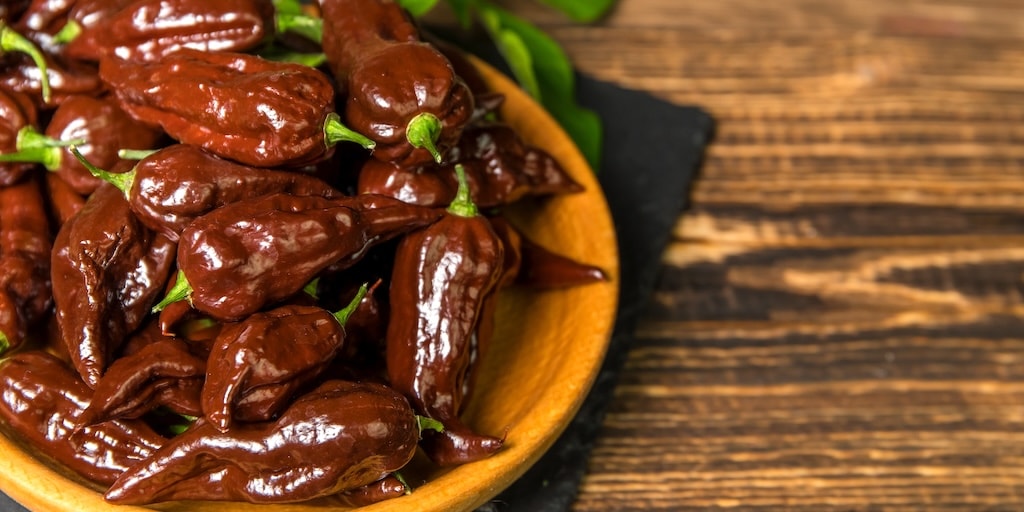
Image: Pepper Chilli Seeds ‘Chocolate Habanero’ from Dobies
Making hot sauce at home is an easy way to capture the fiery essence of chillies and tailor the heat and flavour to your liking. Around the world, diverse methods of creating hot sauces highlight regional tastes and traditions. In Mexico, traditional hot sauces like salsa roja combine fresh or roasted chillies with tomatoes, onions, and garlic, creating a robust and smoky flavour. In the Caribbean, Scotch bonnet peppers are blended with tropical fruits like mangoes or papayas, adding a sweet yet fiery punch.
One of the most intriguing methods is lactic fermentation, where chillies are fermented with saltwater for several weeks. This technique, popular in parts of Asia, enhances the chillies’ complexity, yielding a tangy, probiotic-rich sauce reminiscent of Korean gochujang or Sriracha. The fermentation process not only preserves the chillies but also develops deep umami flavours and beneficial bacteria.
Here’s my own favourite hot sauce recipe that you can alter and amend as required.
Step-by-step method to making chilli sauce
Ingredients:
- 500g (1 lb) fresh chillies, stems removed
- 250ml (1 cup) white vinegar
- 1 onion, chopped
- 4 garlic cloves, minced
- 1 tbsp sugar
- 1 tsp salt
Method:
- Combine all ingredients in a blender and blend until smooth.
- Pour the mixture into a saucepan and simmer for 20 minutes, stirring occasionally.
- Let the sauce cool, then transfer to sterilised bottles. Store in the fridge for up to 6 months.
Cooking Tip: When handling fresh chillies, especially the hotter varieties, wear gloves to avoid skin irritation. Always wash your hands thoroughly after handling chillies and avoid touching your face.
Preserving your own fresh, homegrown chillies opens up a world of culinary possibilities. Whether you’re drying, freezing, pickling, or making hot sauce, each method offers a unique way to enjoy these vibrant peppers. So go ahead, spice up your life, and savour the flavour of chillies all year round!
Lead image: Chilli Buena Mulata from Dobies (©Rob Smith’s Allotment)

